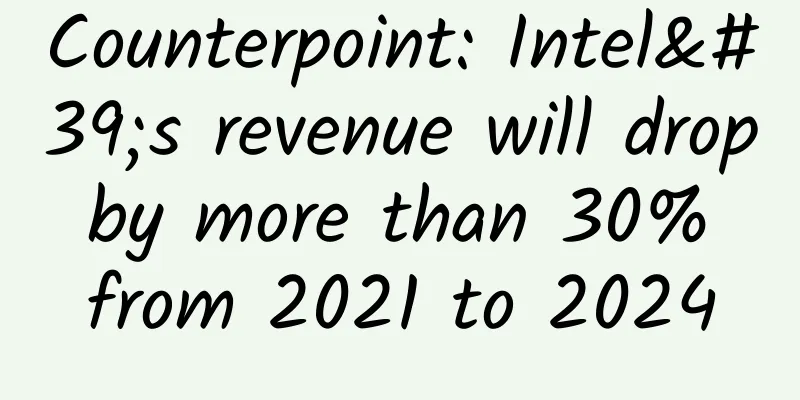Counterpoint: Intel's revenue will drop by more than 30% from 2021 to 2024

|
Intel's revenue plummeted by more than 30% between 2021 and 2024, one of the most challenging periods in the company's history. Intel has lost considerable ground against its main semiconductor rivals Intel's revenue declines reflect an erosion of its dominance in the core CPU market, exacerbated by a stagnant PC industry and growing competition from Advanced Micro Devices (AMD). AMD's latest processors often match or exceed Intel's in performance, energy efficiency, and cost-effectiveness, further undermining Intel's market position. Between 2015 and 2024, Intel's share of the client and server CPU markets plummeted from 80% to around 60%. Intel continues to invest billions to expand its foundry business to regain its glory Intel has traditionally been a leader in semiconductor manufacturing technology in terms of cutting-edge processes and intellectual property innovation. Over the past decade, Intel has experienced significant delays in its transition to more advanced manufacturing nodes. Its semiconductor manufacturing technology, especially the 10nm process (10nm, 10nm+ and 10nm++), has faced multiple challenges, leading to its declining position in the semiconductor industry. In addition, Intel's adoption of EUV technology, production increases, and capacity expansion have been slower than its competitors. This has led to production bottlenecks and delays in new product launches. In contrast, competitors such as AMD, Nvidia, and Qualcomm have gained technological advantages by leveraging TSMC's advanced foundry capabilities. Intel fails to seize the opportunity brought by GenAI demand in 2023 In the data center and PC GPU market, Intel is a latecomer into a market dominated by Nvidia and AMD, which have built up a solid reputation and market share over the past few decades. Nvidia, in particular, has a deep-rooted presence in gaming, professional workloads, and AI applications, setting a high bar for Intel to surpass. Intel's products, such as the Arc series for PCs and Ponte Vecchio for data centers, are still relatively new and need to prove themselves capable of competing with more mature products, especially in terms of algorithms and feature support. |
<<: Huawei nova hands-on review: how the fashionable phone interprets youthful vitality
>>: How big is the gap between Xiaomi's self-developed processor and Qualcomm and Huawei?
Recommend
A doctor switched to catching snakes and discovered the new king of poison in Asia! How crazy is this choice at the age of 35?
2025 is the Year of the Snake in the Chinese luna...
Ocean Science Comics | Ocean Hunter - Shark
When it comes to creatures at the top of the food...
The interface is cleaner! Android QQ 8.8.11 is released: a new simple mode is here
Tencent today released the latest official versio...
Reject BOSS Direct’s “brainwashing” marketing! Avoid these 3 misunderstandings when promoting your products!
Recently, many netizens have expressed that they ...
How to improve users' sense of security and win their hearts?
Internet products (especially new apps) are troub...
Stegosaurus: A hug of love and fear of being hurt
Stegosaurus is one of the most well-known dinosau...
Alipay Mini Program officially opens public beta to individual developers
[[258329]] Alipay Mini Program officially opened ...
Everything you want is here: 138 operation tools recommended! (Recommended for collection)
About the platform, about pictures, about typeset...
Source Code|Cloud Tags
Source code introduction: cloud tag deletion, add...
Minimalist landscape painting course while traveling
Traveling and drawing minimalist landscape painti...
2020 Private Domain Traffic Full Link Practical Operation Guide
Private domain traffic is a mechanism to better s...
Dialogue with Robin Li: When we are at the intersection of the times
[[127002]] Three elements for Baidu's success...
How to improve user retention rate? Share 6 rules!
Retention rate is the most important criterion fo...
up to date! An inventory of the characteristics of channels such as Tik Tok, Tencent, and Weibo!
“How do I optimize my account?” “How to solve the...
Analysis of China Merchants Bank’s private domain operation strategy!
When it comes to banks, everyone thinks that this...









